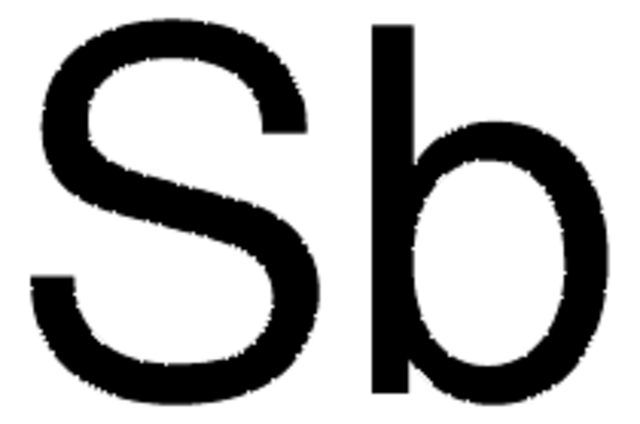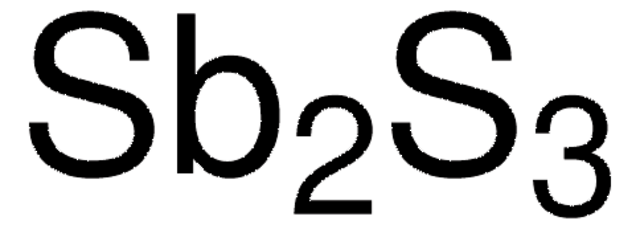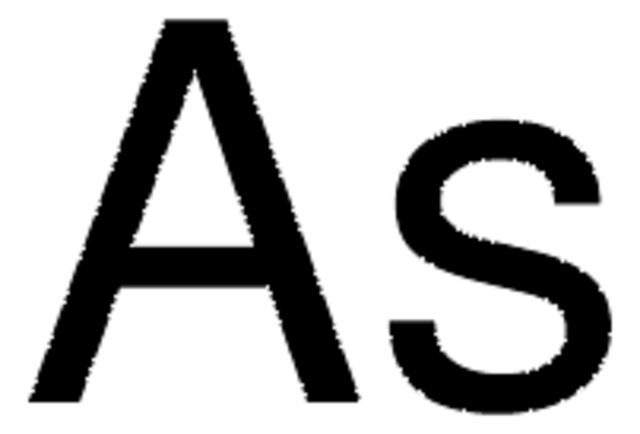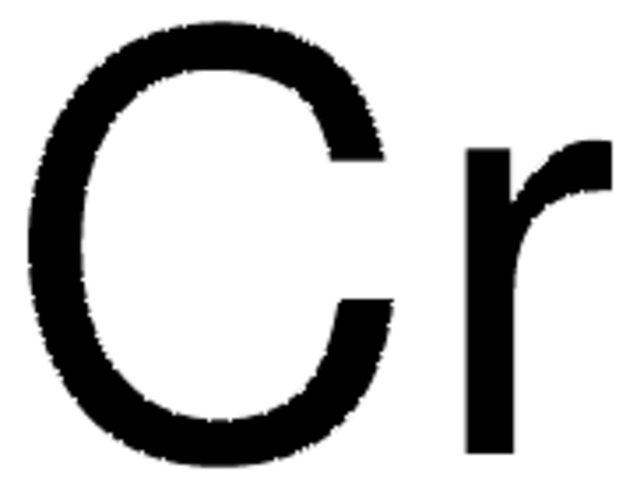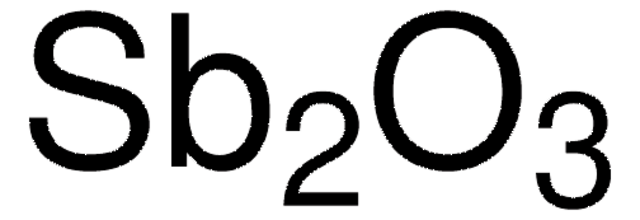266329
Antimony
powder, -100 mesh, 99.5% trace metals basis
Synonym(s):
Antimony black, Antimony element
Sign Into View Organizational & Contract Pricing
All Photos(3)
About This Item
Empirical Formula (Hill Notation):
Sb
CAS Number:
Molecular Weight:
121.76
EC Number:
MDL number:
UNSPSC Code:
12141704
PubChem Substance ID:
NACRES:
NA.23
Recommended Products
Quality Level
Assay
99.5% trace metals basis
form
powder
resistance
41.7 μΩ-cm
particle size
-100 mesh
bp
1635 °C (lit.)
mp
630 °C (lit.)
density
6.69 g/mL at 25 °C (lit.)
SMILES string
[Sb]
InChI
1S/Sb
InChI key
WATWJIUSRGPENY-UHFFFAOYSA-N
Looking for similar products? Visit Product Comparison Guide
Signal Word
Warning
Hazard Statements
Precautionary Statements
Hazard Classifications
Carc. 2 - STOT RE 2 Inhalation
Target Organs
Lungs
Storage Class Code
6.1D - Non-combustible acute toxic Cat.3 / toxic hazardous materials or hazardous materials causing chronic effects
WGK
WGK 3
Flash Point(F)
Not applicable
Flash Point(C)
Not applicable
Personal Protective Equipment
dust mask type N95 (US), Eyeshields, Gloves
Regulatory Information
新产品
Choose from one of the most recent versions:
Already Own This Product?
Find documentation for the products that you have recently purchased in the Document Library.
Daoyong Zhang et al.
Bioresource technology, 128, 711-715 (2012-12-19)
Extracellular polymeric substances (EPS) existed ubiquitously in biological systems affect the mobility and availability of heavy metals in the environments. The adsorption-desorption behaviors of Hg(II) and Sb(V) on EPS were investigated. The sorption rates follow Sb(V) > Hg(II), and the
Budhaditya Mukherjee et al.
Proceedings of the National Academy of Sciences of the United States of America, 110(7), E575-E582 (2013-01-24)
The molecular mechanism of antimony-resistant Leishmania donovani (Sb(R)LD)-driven up-regulation of IL-10 and multidrug-resistant protein 1 (MDR1) in infected macrophages (Ms) has been investigated. This study showed that both promastigote and amastigote forms of Sb(R)LD, but not the antimony-sensitive form of
Anette Stauch et al.
PLoS neglected tropical diseases, 6(12), e1973-e1973 (2013-01-04)
Pentavalent antimonials have been the mainstay of antileishmanial therapy for decades, but increasing failure rates under antimonial treatment have challenged further use of these drugs in the Indian subcontinent. Experimental evidence has suggested that parasites which are resistant against antimonials
Jaime Soto et al.
Clinical infectious diseases : an official publication of the Infectious Diseases Society of America, 56(9), 1255-1260 (2013-02-08)
Cutaneous leishmaniasis is an ultimately self-curing disease for which systemic therapy with pentavalent antimony (Sb) is effective but with side effects. We evaluated 2 local treatments, intralesional (IL) Sb and cryotherapy, for single lesions due to Bolivian Leishmania (v.) braziliensis
Joseph N Jarvis et al.
Current opinion in infectious diseases, 26(1), 1-9 (2012-12-12)
HIV infection profoundly impairs the immune mechanisms needed to control and clear Leishmania infection, and outcomes in patients with HIV-associated visceral leishmaniasis are poor. This review summarizes recent work describing the epidemiology, presentation and outcomes of HIV-associated visceral leishmaniasis and
Our team of scientists has experience in all areas of research including Life Science, Material Science, Chemical Synthesis, Chromatography, Analytical and many others.
Contact Technical Service